FARMLAND ODYSSEY
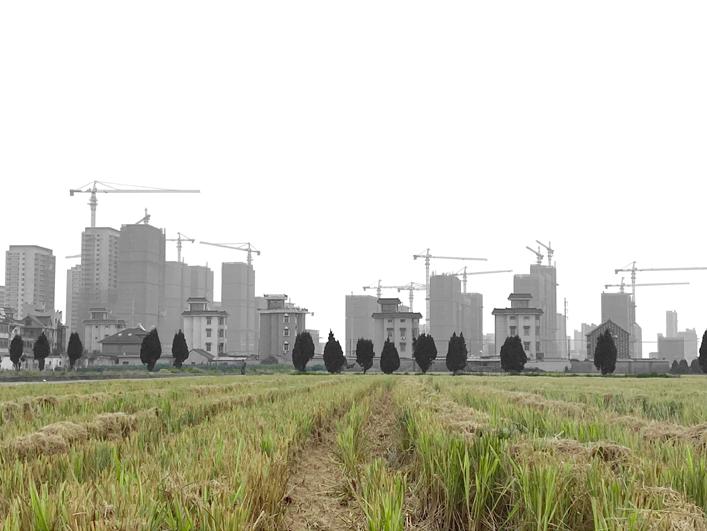
Urban Expansion in Hangzhou
A Jihao (Joshua) Shen Thesis Research Proposal Advisor: Nicholas Hoban
CONTENT TABLE OF CONTENTS
CONTENT
TABLE OF CONTENTS
THESIS THESIS STATEMENT RESEARCH QUESTIONS RESEARCH METHODS
BACKGROUND INTRODUCTION
GEOGRAPHICAL LOCATION LOCAL FARMING CULTURE CHINESE CITY TIER SYSTEM CONTEMPORARY HISTORY OF URBAN EXPANSION POLITICAL REASONS
PRESENT HANGZHOU
GOVERNMENT MEASURES
CURRENT STATUS OF AGRICULTURAL PRODUCTS CURRENT STATUS OF FARMERS PROJECTED ISSUE
CASE STUDIES
PRESERVATION
GREENBELT (LONDON) GREENBELT (ONTARIO) URBAN AGRICULTURE ROOF FARM (PROJECT EATS) LANDSACPE FARM (K- FARM) RECLAMATION
LAND RECLAMATION (SAEMANGEUM PROJECT)
SUPPORTING DOCUMENT
TIMELINE BIBLIOGRAPHY
THESIS
I. THESIS STATEMENT II. RESEARCH QUESTIONS III. RESEARCH METHODS
THESIS THESIS STATEMENT
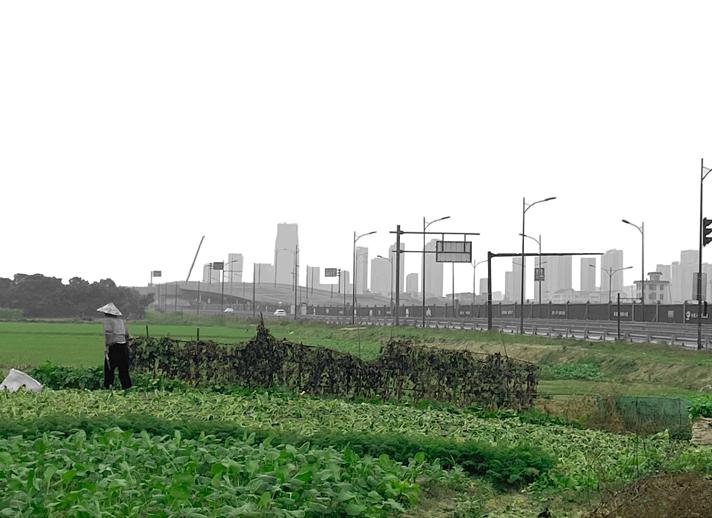
6
After the reform and opening-up of Chinese economics in 1978, China not only kept developing its first-tier cities, such as Beijing and Shanghai but also shifted the economic focus to several second-tier cities. To do so, the Chinese government introduced a few examples of previously successful urban construction cases in the Chinese first tier cities and advanced Western urban fabrication, such as the Manhattan grid system, in these developing cities. The government's purpose was to grow the economy while achieving urbanization as soon as possible. Accomplishing these goals will strengthen the national power and enhance the country's international status, which was weakened due to previous setbacks such as the corruption in the old feudal society, World War II, and the Chinese Civil War. However, China, as a typical “urban-rural dual economic structure" country, while under the influence of the policy of sacrificing agricultural development to pave the way for urban construction needs, is suffering from a massive distinction between the development of urban and rural areas.
Hangzhou is considered to be one of the top cities within the government's second tier list, currently experiencing the rapid outspread of the urban area while suffering from the consequences of erasing farmland. As the government vigorously develops urbanization which is causing the erasure or reserved use of the surrounding rural land, the farmland owner, the farmer are being forced to migrate from their original pastoral or farming lifestyles. Furthermore, rural area residents have to seek new occupations, which could be problematic because most are uneducated villagers and farmers, and this unsuitable situation could cause family and financial consequences, which could have lasting effects within generations. In addition, the use of arable land and the population of the arable land’s owners are decreased, which would further damage the traditional culture of agriculture: a culture that has existed for thousands of years in Hangzhou, a city located in the Yangtze River Delta region, China's top rice producing area.
The thesis aims to propose the possibility of restoring the traditional farming culture while maintaining the original lifestyle of the farmers in Hangzhou under the urban expansion situation. It will do so by researching and analyzing the urban expansion on the cropland in the recent twenty years and also the lifestyles and living qualities of the migrated farmer.
7
THESIS RESEARCH QUESTIONS
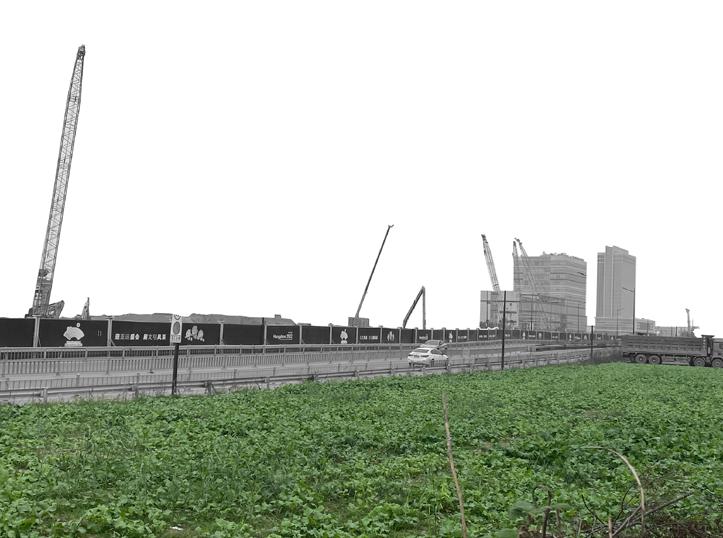
8
How did the historical and socio political context prompt the rapid urban expansion in Hangzhou?
How did the erasure of the farmland, caused by urban expansion, affect the status of farmers, agriculture, and the traditional farming culture in Hangzhou?
Why the farmland is important from farmer's perspective and consiedering the status of importing and exporting agricultural products.
How can the approaches from other projects worldwide contribute to the design proposal to the specific situation in Hangzhou?
9
THESIS RESEARCH METHODS
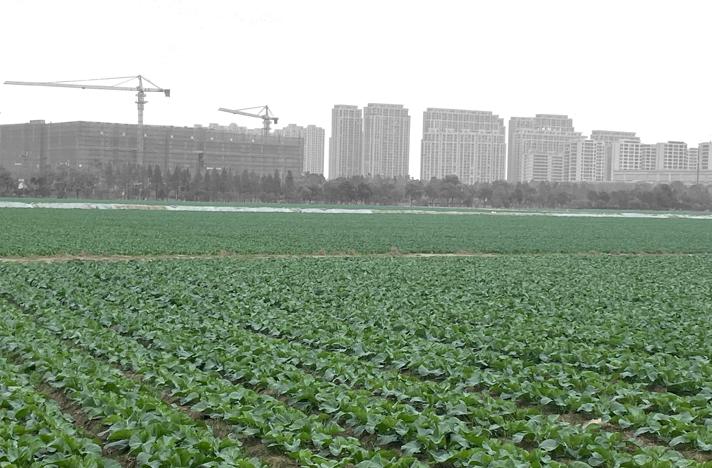
10
The research focuses on the city Hangzhou, located in the Southeast part of China, a city with the rapidest urban construction rate in China for the past few decades. Furthermore, Hangzhou is also my hometown, where I grew up and experienced the years with this fast city expansion. The contributing reasons to the quick expansion include social, political and economical factors. As a result, huge areas of rural lands have been taken for the construction needs. This research would start from investigating the above aspects through various methods.
From the urban scale, the geographical situation of Hangzhou city is analyzed to establish a comprehensive understanding of the function of this piece of land and how it affects the necessities and interests of farmers. At the same time, analyzing the statistics of agricultural products together with the density of farmers' population in Hangzhou enables a further understanding of Hangzhou's agriculture. Moreover, it provokes thinking of the conflict that is affecting the quality of farmers' lives in a negative way, which is caused by the shrinking of farmlands and rural areas due to urban expansion.
Likewise, not just considering the countryside, researching on the root causes of urban sprawl is also a key factor to understanding the problem. As the outcome of the research, Chinese political and international events held in Hangzhou with the Chinese city tier system can be perceived as the main reasons for determining the urbanization of Hangzhou in recent years.
The case studies can also help the research, as these cases from around the world carry information about local cities, social structures, and solutions to local urban-rural conflicts. Although the destruction caused by urbanization to rural lands and the disruption of farmers' lifestyles are reflected in various developing regions worldwide, the urban structural systems of different countries and cities are different. Therefore, the approaches to the problems are not completely unified. Thus, each case needs to be examined carefully, since some of them may be successful in their own situations, and yet not fully contributable to Hangzhou. In contrast, some cases may not solve all the issues, but partial strategies contained in them can be used for reference. It requires serious consideration to adopt the points applicable due to the local characteristics of Hangzhou.
The personal experiences and connections can also serve as a solid reference. The information extracted from secondary sources are definitely not as convincing as primary personal experience. The living experience in Hangzhou provided me with the understanding of the composition of the city's social structure, also the functions, environment, and cultural distribution of various areas in Hangzhou. This allows for a better comprehension of the direction of urban expansion. Moreover, many of my relatives and acquaintances are farmers. Thus, consulting their experiences and lifestyles that are changed due to urban expansion can better support the understanding of the perspective and mood from farmers’ point of view on urban expansion, plus the government’s attitudes and the measures to treat farmers.
11
BACKGROUND INTRODUCTION
I. GEOGRAPHICAL LOCATION
II. LOCAL FARMING CULTURE III. CHINESE CITY TIER SYSTEM IV. CONTEMPORARY HISTORY OF URBAN EXPANSION
V. POLITICAL REASONS
BACKGROUND INTRODUCTION GEOGRAPHICAL LOCATION
14
Yangtze Delta Rigon
The Yangtze Delta is a triangleshaped megalopolis comprising the city of Shanghai, the southern Jiangsu province and the northern Zhejiang provinces. Hangzhou, as the capital city in Zhejiang, is included. The area lies in the heart of the China Southeastern region, where the Yangtze River drains into the East China Sea.
Throughout history, based on the erosion of the Yangtze River, a plain was created to form this region, which made it fertile soil, and prompted many inhabitants to choose the profession as farmers. The Yangtze Delta abundantly produces cotton, hemp, tea, and grain, mostly rice, wheat, and corn.


15
BACKGROUND INTRODUCTION LOCAL FARMING CULTURE

16
The local farming culture in Hangzhou mainly takes place in the countryside. Traditional rural housing in Hangzhou is often a three to five-story house, and the land behind the house is the farmland assigned to the house owner. Most of the houses are in poor condition. Many of them do not have proper internet and air conditioning.
Most of the farmers are the elderly or middle-aged people and 69% of them are without proper education. These farmers were born in the countryside, and their families have been farmers for generations, and the same piece of land has been passed down from generation to generation. They have learned to cultivate the land from their elders. In addition, they lack any other occupational skill.
The agricultural products they harvest are mostly grain and green leafy vegetables, which the main purpose is for self-efficiency and for their own family. Surplus products are sold to contractors at a much lower price than market price. Later, these products will be shipped to agricultural markets across the city as fresh organic green food.
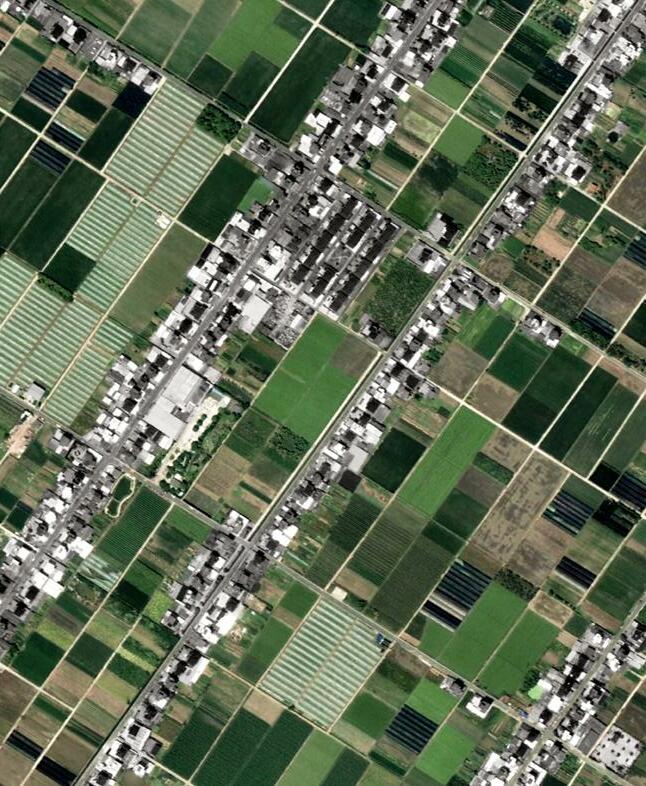
17
BACKGROUND INTRODUCTION CHINESE CITY TIER SYSTEM
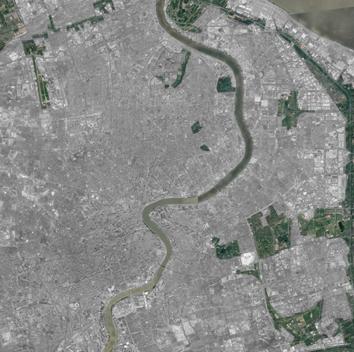
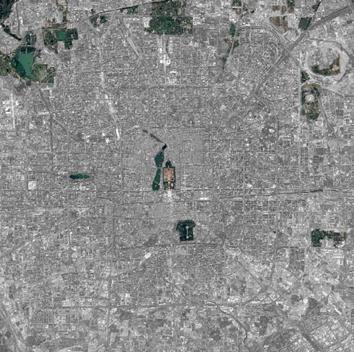
18
Beijing Shanghai
The Chinese city tier system can be considered as the main reason causing Hangzhou’s urban expansion in recent decades.
China classifies cities according to their economy, area, population, and other factors. Among all the cities, there are four first-tier cities, Shanghai, Beijing, Guangzhou, and Shenzhen. These four cities are world-renowned cities. At the same time, these cities and their economies developed earlier compared to other cities in China. Presently, the first-tier cities are larger in scale and have a larger population. They are viewed as the most representative cities in China. The remaining cities are divided into 45 second-tier cities, 70 third-tier cities, 90 fourth-tier cities, and 128 fifth-tier cities. The reason for tiering cities is to allow for a more efficient allocation of resources and management. Hangzhou is one of the fastest-growing cities among the second-tier cities, and it is also one of the cities closest to the first-tier cities in terms of the economic scale.
After 1980, China was recovering from World War II and the Chinese Civil War. The government began to focus on assigning limited resources to first-tier cities. By the beginning of the 21st century, these first-tier cities have become quite urbanized, and their economic prosperity has led to a large number of people migrating to these cities to settle. Therefore, the development of urbanization and the population are close to saturation.
Under this premise, China began to shift its focus to better-developed cities in second-tier cities, and the first choice for the key target is Hangzhou. After 2000, the Hangzhou government began large-scale urban construction, built subways and train lines, expanded the airport, and reduced factory pollution emissions. Meanwhile, with the old city as the center, the city began to expand outwards.
Images below are aerial photographs illustrating 625 square kilometers of each of the first-tier cities. It is clearly showing that the green spaces of the four first-tier cities are mostly mountains and urban artificial parks, but there is almost no rural or farmland left.


19
Shenzhen
Guangzhou
BACKGROUND INTRODUCTION CONTEMPORARY HISTORY OF URBAN EXPANSION
20
Before 2000, the population of Hangzhou was not large, nor was the city size. At that time, Hangzhou was only a tourist city without any outstanding economic development. The development of the old city of Hangzhou was not compact as it was all separated as individual small towns. Throughout history, native Hangzhou inhabitants established small-scale towns in various parts of Hangzhou, either adjacent to rivers or mountains. While the main urban area of Hangzhou was formed by the population that migrated from northern China due to wars during the Southern Song Dynasty. The culture and dialects from the north were brought into Hangzhou, so the cultural differences between the main urban area and other individual towns of Hangzhou made it difficult for the whole of Hangzhou to blend together.
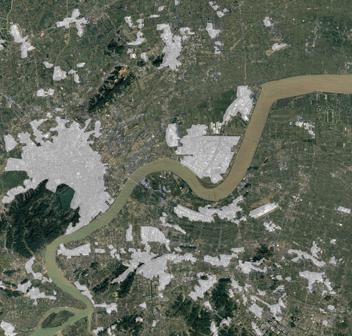

However, with the popularization of China's modern cultural education and the standard language, people in various regions share the same education system and abandon the dialect. In this way, the culture blends together and gradually breaks down the cultural barriers in various regions of Hangzhou. After 2000, along with the government’s determination of urbanization and economic support, the city of Hangzhou expanded rapidly. From the center of each individual town, it expanded outwards and gradually connected each separated urban area. In just 20 years , the urban area has expanded to 648 square kilometers, slightly larger than today’s Toronto's urban area of 630 square kilometers.
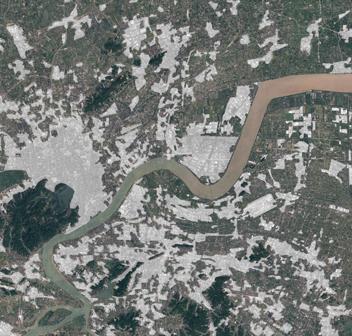

21 1990 2000 2010 2020
BACKGROUND INTRODUCTION POLITICAL REASONS
22
In recent years, few international activities held in Hangzhou are rather urgent, increasing the speed of the urbanization process in Hangzhou. To be able to hold these activities, the Hangzhou government prescribed the region that needs to be constructed first before the arrival of these activities. Multiple constructions have become crucial projects for the government, as they wish that accomplishing these constructions could enhance the country's international status. For example, the G20 summit in 2016 is one of the activities. The G20 as the Group of Twenty is an intergovernmental forum comprising 19 countries and the European Union (EU). It works to address major issues related to the global economy, such as international financial stability, climate change mitigation, and sustainable development. To prepare for the G20 summit, the government has given priority to accelerating the urbanization surrounding the airport and summit venue. The place was established from a large area of farmland to the present city center. Ironically, the government also painted the roofs of some industrial factories that were too late reconstructed, to paint in a uniform color and to make the roof look more decent when viewed from the plane when leaders of other countries visit.

Another example is the 2022 Asian Games in Hangzhou, which was postponed to 2023 due to the pandemic. To meet the scale of the competition, Hangzhou has started to build a dedicated stadium for the competition since 2009, the Hangzhou Olympic Sports Center. At the same time the government also built supplementary facilities surrounding the stadium. All international political factors have accelerated Hangzhou's urbanization, but some problems have not been well thought out or resolved.

23
Coexistence of Construction Site and Farmland 2016
Zero Percentage of Farmland 2022
PRESENT HANGZHOU
I. GOVERNMENT MEASURES
II. CURRENT STATUS OF AGRICULTURAL PRODUCTS
III. CURRENT STATUS OF FARMERS
IV. PROJECTED ISSUE
PRESENT HANGZHOU GOVERNMENT MEASURES


26
While a region of farmland in a certain area is planned to be urbanized by the government, the government will take certain measures to compensate the farmers whose houses or farmland will be demolished, in order to persuade the farmers to move away. Thus the farmers will not affect the government's construction work. There are generally two types of compensation clauses:
Financial Compensation
The amount is evaluated based on the land area and the quality of the house, but usually, the maximum will not be higher than 3,000 yuan (about 430 US dollars) per square meter. This is very little compared to the standard housing prices in Hangzhou. However, most of the farmers do not have a high income, so that one-time large amount of compensation is good enough for them.
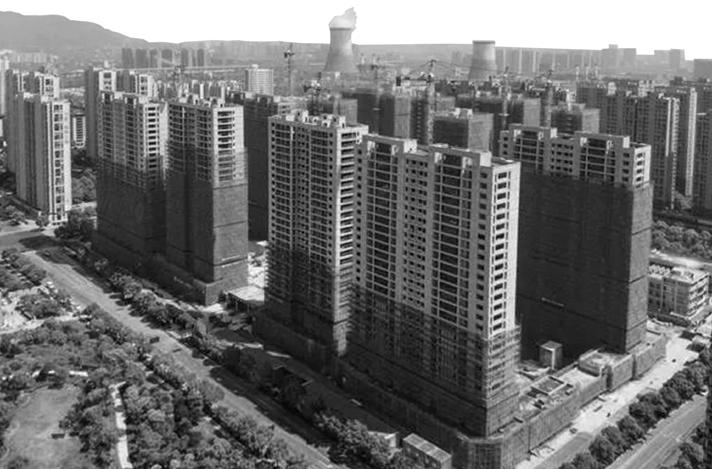
Dwelling Compensation
The government will compensate these farmers with apartments of the same price as their original houses. The purpose of constructing these apartments is to accommodate farmers, so the community, environment, surrounding facilities, and apartment types are generally poor. Whether they can accept the change of living residence is also an important reason why these farmers are willing to accept this compensation.
Although the government promises compensation, no matter what the situation is, the final result for the farmers is to move to the city. A small number of farmers with certain economic savings or income can still enjoy good quality living conditions in the urban environment. However, the result of ending up living in the city, could this be seen as the farmers' intention or a helpless compromise? In any case, the loss of urban farmland cannot be fully compensated, and what is equally irreparable is the farming culture of thousands of years.
27
High density, poor lighting condition, and the community location is mostly close to industrial factories.
PRESENT HANGZHOU CURRENT STATUS OF AGRICULTURAL PRODUCTS


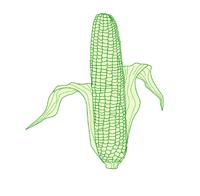

28
Although the data of agricultural products in China as a whole is increasing every year, and the annual import volume of grains is also increasing, the quantity and types of local agricultural products in Hangzhou are declining in a certain trend. The data after 2020 are not considered, because the decline in agricultural data is mainly affected by the pandemic. But from the perspective of 2019, Hangzhou's annual grain harvest has decreased compared with previous years, of which wheat, rice, and potatoes have all declined not less than 70,000 tons for each. Moreover, judging from the agricultural output value in contemporary history, the proportion of agricultural production capacity has been declining.
The Yangtze delta region has been an important food production area since ancient times. The reduction of farmland and farmers could be considered as an important factor for the low production capacity of grains, plus, the construction of urbanization and the reduction of green plants will also cause damage to growing crops to a certain degree of influence.
Low-yield crops will make countries or regions more dependent on imported food. Rice, as the most grown crop in the Yangtze delta region, still needs to be imported in large quantities from Southeast Asian countries, such as Laos, Cambodia, and Vietnam, to meet the needs of China's large population. At the same time, due to various factors such as landform features, climatic conditions, prices, and markets, many crops in China do not have suitable farmland for cultivation, or the amount of cultivation is far below daily needs, such as corn, soybeans, etc. , all rely on imports from America and Europe. Although imported food can solve the current problem of sufficiency in food, there are many factors that affect imported food, such as politics, epidemics, etc., which would all cause issues such as huge price changes and supply chain missing.
Moreover, local farm products represent fresher and healthier food. This kind of high-quality crop has a good market in the local area. Farmers can bring their home-grown produce to nearby farmers markets to sell it to urban residents.Having a larger amount of farmland can enable the region to better meet the needs of local residents to a certain extent, and lower import requirements.
Myanmar, Vietnam, Pakistan, Thailand, Cambodia, Laos, Brazil, United States, Argentina, Canada, New Zealand, Ukraine, Australia, France, Uruguay, Indonesia, Russia and Spain.
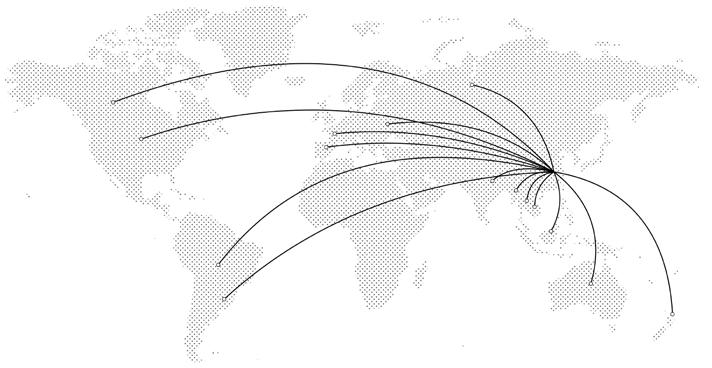
29
PRESENT HANGZHOU CURRENT STATUS OF FARMERS
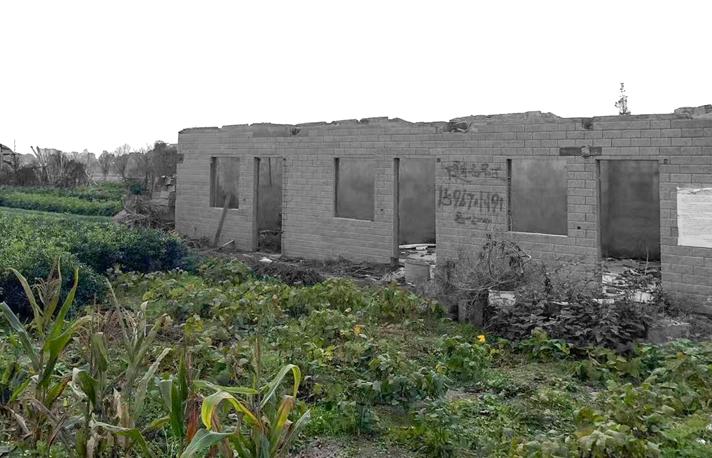
30
Based on the urban expansion, farmers who used to live similarly in the rural area are now potentially divided into many types:
Farmers who have relocated to cities
The houses and farmlands of these farmers have been demolished and become part of urbanization. Now these farmers live in compensated apartments, and the lack in cultural and other occupational skills limit most of them to find satisfying jobs. Thus it requires the farmers to engage in service-type occupations, such as security or cleaner, and this could further cause them financial problems due to the higher cost in the cities than in rural areas. Furthermore, the various complex transportations and facilities in the city are fairly different from the original simple farming life, which could result in a sense of unevenness for the farmers.
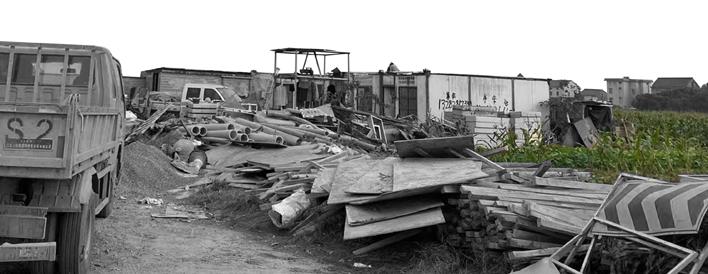
Farmers on the edge of urbanization
These farmers live on the edge of the urbanization reserved land, where the houses nearby have already been demolished and turned into a construction site. They live under the noise of the construction site, and at the same time, they have to continue to farm their lands by themselves to maintain their subsistence needs. Meanwhile, the farmlands are surrounded by construction waste and dust. Although these farmers still live in rural areas, the peaceful pastoral lifestyle is already gone.
Farmers whose land is reserved
The land of these farmers is included as a part of the urbanization area by the government. Before the construction starts, their land is reserved by the government first, and they have to migrate away within the specified time. Usually, half to one year is left for them to prepare. Therefore, in the short remaining time, the types of crops to cultivate on the farmland need to be considered, since only the short-term mature crops can be planted, otherwise nothing can be planted at all. While they are waiting to be relocated, their farming lifestyle will come to an end.
Farmers who refused to move
There are also farmers who rebelled against the government. Some farmers do not support the government's measures, and are dissatisfied with the government's compensation. These farmers are unwilling to leave their original lives. There are cases showing that they are successful in preserving their original houses and farmlands. But except for their territory, the surrounding areas are all covered by urbanization.
Regular farmers
These farmers have heard the news of urbanization, and even though it is not affecting their land at this moment, they are worried about the future and the next generations.
31
Farmland next to construction wastes.
PRESENT HANGZHOU PROJECTED ISSUE
32
As the farmland keeps reducing,
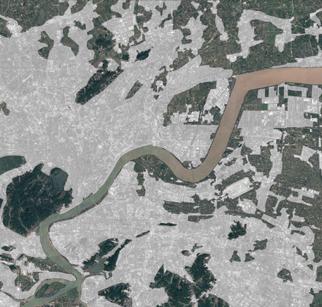
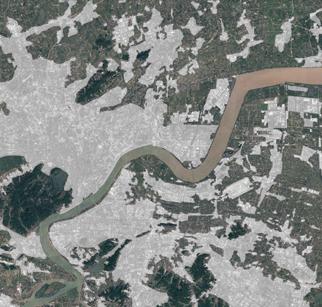

Farmer:
Existing farmers are no longer engaged in farming and live in cities with poor quality of life. The lifestyle of farmers is lost. No new generation of farmers. The profession of farmers is lost. The farming culture could not be passed on and the culture is lost.
Crop:
Fewer crop production and fewer varieties. More reliance on the import of crops and causing crop prices to rise.
33 ...
2040
2020 2030
CASE STUDIES
I. PRESERVATION
GREENBELT (LONDON)
GREENBELT (ONTARIO)
II. URBAN AGRICULTURE
ROOF FARM (PROJECT EATS)
LANDSCAPE FARM (K- FARM)
III. RECLAMATION
LAND RECLAMATION (SAEMANGEUM PROJECT)
CASE STUDIES PRESERVATION
36
The meaning of preservation is to protect the existing farmland so that it will not be destroyed by urban expansion or any other factors. The protected farmland should also fulfill the functions that the farmland should have to produce crops with high quality and quantity, instead of changing the use of the land according to the wishes of the farmland owner.
One of the solutions that is widely used in the world to protect the rural land from urban expansion is to draw a clear dividing line between rural land and urban areas to stop urban sprawl. At the same time establish a clear area for the rural land, to protect farmland, communities, forests, wetlands, watershed, and furthermore, the cultural heritage of agriculture.
However, the use of green belts has strict requirements on the city that the Greenbelt actually has limited ability to control urban sprawl, and the urban expansion in many regions have exceeded the limits of the Greenbelt. Especially in fast developing cities, if the rapid population growth cannot be controlled, then the size of the city would not be able to provide housing for everyone, in this way, urban expansion is inevitable. Thus, before applying the Greenbelt, a detailed investigation should be conducted on the city's population density, population growth rate, and housing needs.
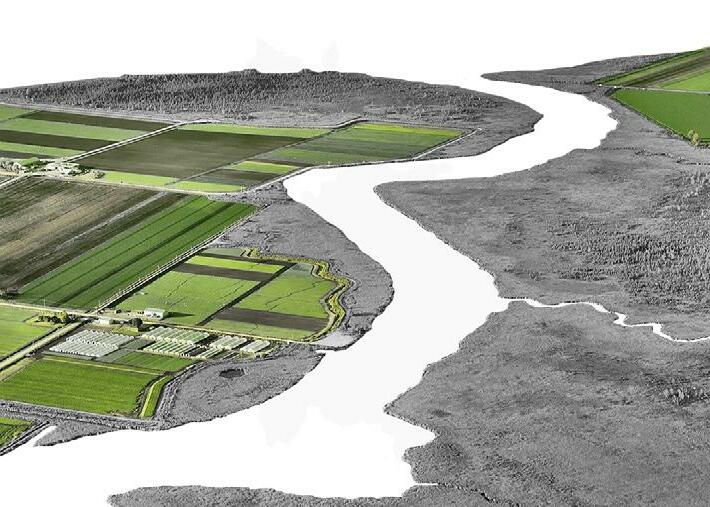
37
Ontario Greenbelt
CASE STUDIES PRESERVATION GREENBELT (LONDON)
38
The Greenbelt Policy in Britain has long been one of the most popular planning policies in British history with strong public support. The Greenbelt was launched in a national ministerial circular in 1955 to protect environmental sustainability by creating unique greenery around urban fringes, which used to limit urban sprawl as "boundaries".
While the Greenbelt is preserving valuable resources for sustainable development, it has attracted a lot of negative reviews in the UK. The major complaint is that urban expansion is restricted, and the supply of housing is far less than the growth of population. Therefore, rising house prices make residents need to bear higher debts. Moreover, the public transportation facilities in the urban area of London are relatively complete. Residents living in the urban area hardly need to use cars, but the green belt isolates the city from the city, which makes inhabitants require vehicles to visit the surrounding cities, therefore the Greenbelt has brought inconvenience to the transportation of a large part of urban inhabitants. Also, because the area that the city can develop is limited by the green belt, the development of the urban area will only become more and more dense, further causing traffic congestion in the city and deteriorating air quality.
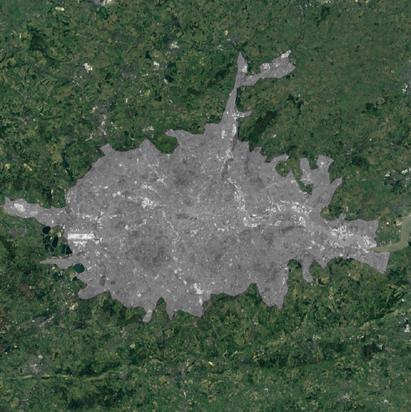
39
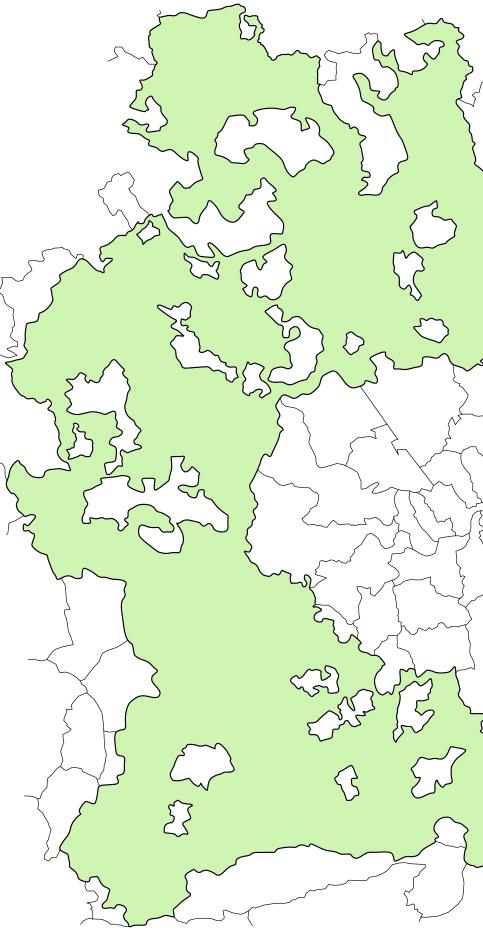
40

41
London Greenbelt
CASE STUDIES PRESERVATION GREENBELT (ONTARIO)
42
The Golden Horseshoe, as one of the fastest growing urban areas in North America, from the 1990s to 2000s, the population in this region increased from 6.5 to 7.7 million. The rapid increase of the population puts pressure on the urban development around this region as more dwellings have to be built. Between 1996 to 2001, the area of farmland has almost decreased by 7%.
In 2003, Dalton McGuinty, Premier of Ontario proposed the idea of establishing the Ontario Greenbelt to stop the urban sprawl and protect the agricultural land. Meanwhile, the greenbelt also protects sensitive ecological and hydrological features, such as the Niagara Escarpment and the Oak Ridges Moraine.
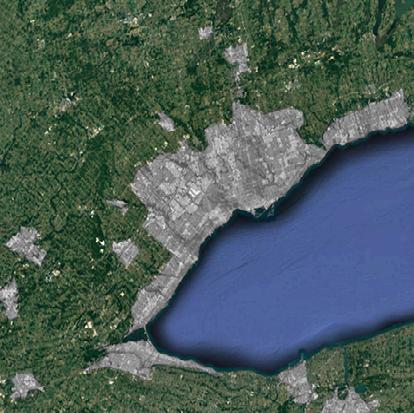
43

44
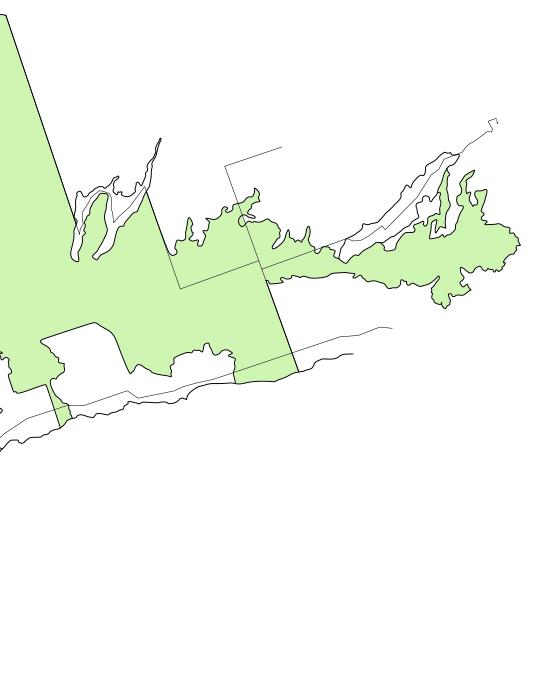
45
Ontario Greenbelt
CASE STUDIES URBAN AGRICULTURE

46
Urban agriculture was first proposed by Japan in 1930. Japan, as an island country with limited territory, has experienced urban expansion in the last century, but as the land in Japan is private, instead of belonging to the government, the farmers could refuse to sell their land to the government or enterprise for the urban construction needs. In this way, patches of green farmland could be kept in the urban cities.
Benefits
Japan pays special attention to children's participation experience in agriculture, so that they can receive farming education. The development of experience in agriculture is an important policy of urban agriculture in Japan.
Japan is short of natural resources, and more than 60% of its food depends on imports. The development of "urban agriculture" will help solve the problem of Japan's heavy dependence on imports of vegetables and fruits.
Unemployment in urban Japan has increased due to unstable incomes and company layoffs. The introduction of the concept of "urban agriculture" can alleviate employment pressure and create job opportunities for the younger generation in Japan.
Education and awareness-raising for improving urban residents’ understanding of agriculture and food issues.
Source of fresh and safe products, including organic and low-chemical crops, that are increasingly demanded by urban consumers. These can be locally produced and consumed based on relationships of trust between farmers and city dwellers.
Opportunity for urban residents’ engagement in agricultural activities, both directly and through exchange between producers and consumers with the sales of agricultural products at local farms.
Shortcomings
The farm area is tiny and the environment is poor. It is inconvenient to implement large-scale agricultural equipment and cannot meet the necessary conditions for crop growth, for example, the sun will be blocked by the surrounding high-rise buildings, or the temperature in the upper floor farm is low, and it is not easy to contact insects for pollination. Various conditions will affect the growth of crops, while crop constants are low, resulting in lower income for farmers.
The farms are scattered and cannot form a large area of green space, which would causing the decline in biodiversity.
47
CASE STUDIES
URBAN AGRICULTURE ROOF FARM (PROJECT EATS)
48
Roof Farm is a common way of the Urban Agriculture. Project EATS is founded in 2009 by artist Linda Goode Bryant, and it is a living installation transforming vacant rooftops into neighborhood-based farms supporting farm stands, pantries, prepared food across New York City. "Communities deserve to grow their own food right where they live".

49
CASE STUDIES URBAN AGRICULTURE LANDSCAPE FARM (K- FARM)
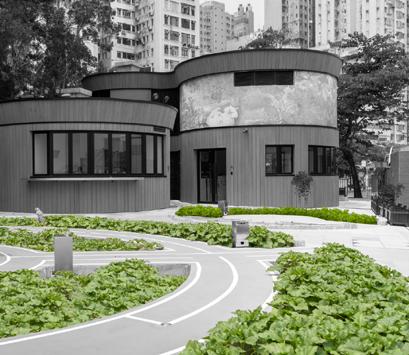
50
K-farm is a project that integrates agricultural land into artificial landscapes. The place that should have been a landscape green space was replaced with farmland, adding the green spaces while improving the local ecosystem. At the same time, it became an agricultural education base, enabling passers-by to experience and learn agricultural knowledge, and inspire people to be more concerned about agricultural protection and the culture, to further develop interest in cultural communication.

51
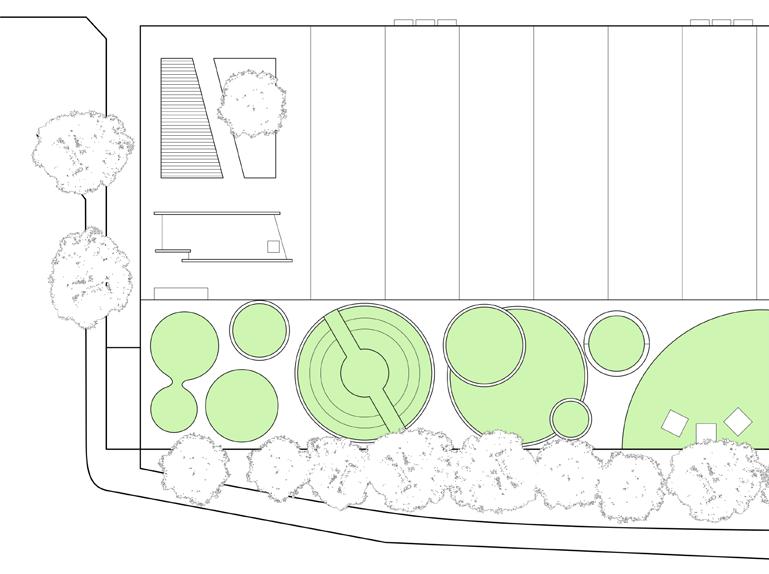
52 1 1. Office 2. Pantry 3. Farm 4. Pond 5. Plaza 2 3 3 3 3 4 4 5
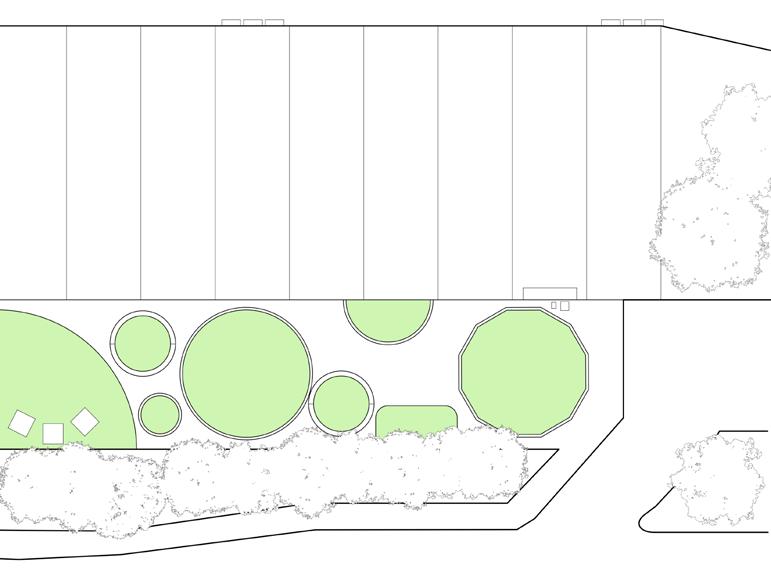
53 3 3 3 3 3 3 3 5
CASE STUDIES RECLAMATION
54
Reclamation means that while the original farmland is erased by urban expansion and construction, new areas are reclaimed as farmland to make up for the loss of the erased farmland. The concept of Vertical Farming is a new type of indoor planting method. Its emergence is to solve the problem of making full use of resources and space, and planting crops in high-rise reinforced concrete buildings. The cultivation methods of crops are also different from traditional farming, and most of them adopt high-tech cultivation methods, such as soilless cultivation.
However, vertical farms are mostly conceptual projects, and their construction costs are extremely high. Furthermore, their indoor lighting and climate control (mainly cooling, and dehumidification) have high electricity costs, so it is difficult to be economically feasible. At the same time, compared with the crops grown by traditional farming methods, the taste and nutritional value of the crops grown indoors are not good enough. Also, the current technology is almost impossible to achieve efficient organic production, especially organic fertilizers that would easily cause damage to irrigation pipes.
In addition to vertical farms, land reclamation is also a method. Reclamation refers to the need to push the coastline forward due to the shortage of land use or the need to cooperate with planning and expand the land area by artificial construction. Some coastal cities need to open up new land to the coast because of the pressure of factors such as limited construction land and economic development. For coastal cities with mountains and little flat land, reclamation is quite an effective way to create flat land for either urban development or farmland use. Many developed coastal cities, such as Hong Kong, use this method to create flat land. The Netherlands is the country with the most land reclamation.
Since 1984, Hangzhou has carried out small-scale land reclamation. By 2020, most of the filled land would still be used as agricultural farmland, but urban expansion has reached the boundaries of these lands. If the city continues to expand at the current speed, the previously reclaimed land will soon become urban construction.
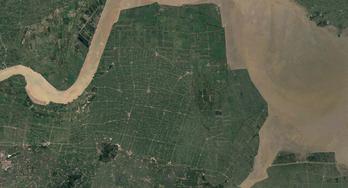
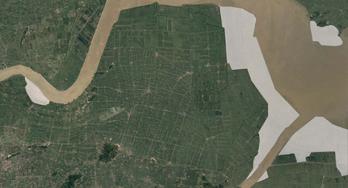
However, for most cities, land reclamation is a helpless choice brought about by previous improper urban planning. Reclamation will seriously damage the ecological environment of the surrounding waters and affect the life of aquatic species. Excessive reclamation will narrow the harbor and make the current more rapid, affecting the navigation of ships and thus affecting the import and export of seaborne cargo. It will also cause soil erosion because more waves will be formed in the ocean to wash away natural sand and soil.
1984 Land Reclamation
55
CASE STUDIES RECLAMATION LAND RECLAMATION (SAEMANGEUM PROJECT)
56
The Saemangeum Seawall is an artificial seawall located on the west coast of South Korea, with a total length of 33.9 kilometers. It is the longest seawall in the world. With an area of 283 square kilometers (equivalent to 2/3 of the area of Seoul), it is currently the largest land reclamation project in the world, meaning to increase the land area by 1 square meter for each Korean citizen.
The Saemangeum project began in 1989, because at that time South Korea’s agricultural land was too small to be self-sufficient in food, and there was no effective source of food imports at that time, so the original purpose of the Saemangeum project was to build an agricultural production base. In 1991, the construction of the project started. Due to the huge size of the project and heavy environmental resistance, the project was closed in 2006 after 16 years, during which it was suspended for 3 years due to environmental protection issues. With the easing of the Korean food problem, the South Korean government changed the future direction of Saemangeum in 2009 and canceled the reclamation project.
From a conceptual point of view, if the Saemangeum reclamation project can be completely built, it will indeed form a very large-scale agricultural base and provide South Korea with sufficient grains and other crops. However, it was precisely because of various reasons encountered in the reclamation project that the project was suspended. One is that the construction period was quite long. From 1989 to 2006 only the construction of the seawall was completed, and the reclamation was not even started. The long-term construction of farmland that has not been put into use has not helped South Korea solve the problem of crop shortage. In the end, South Korea can only find effective food exporters to solve the problem. Another is the pollution to the environment and ecology. Before the completion of the project, this area has always been an important habitat for migratory birds. However, since the completion of the project, the number of migratory birds has been greatly reduced.

57
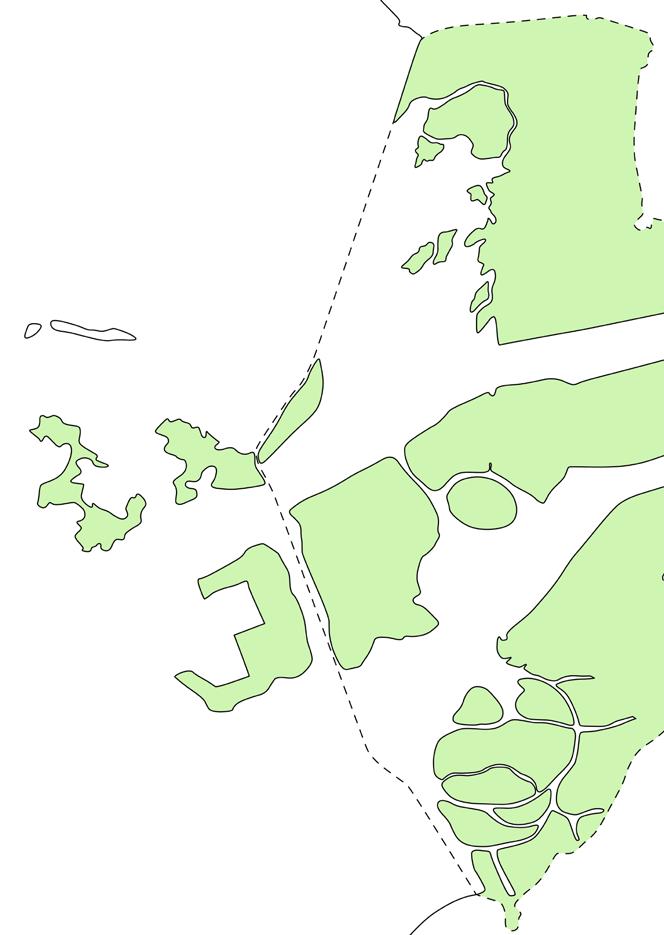
58
Planned Reclaim Land used as Agricultural Base
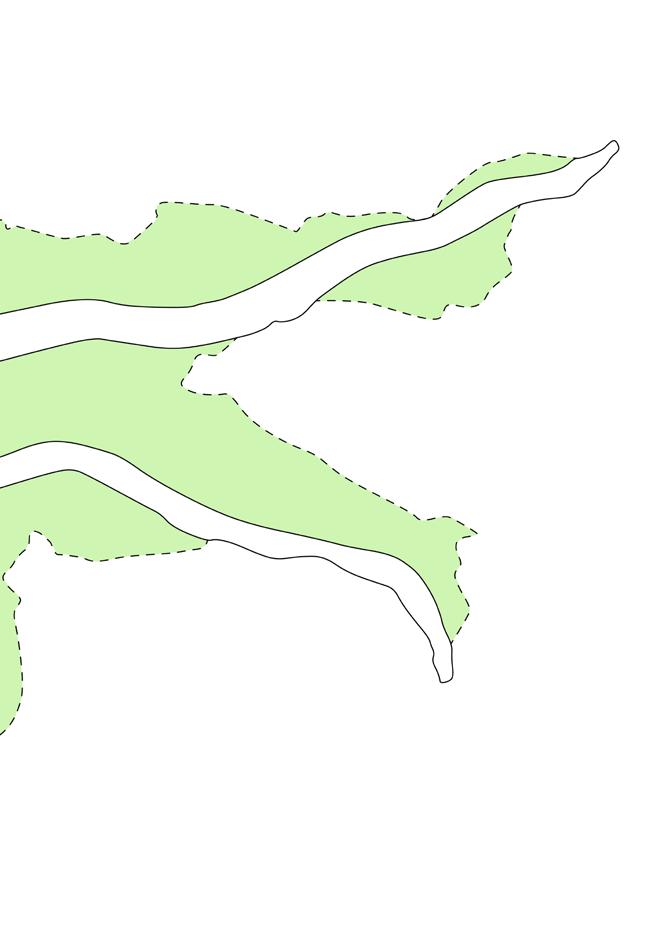
59
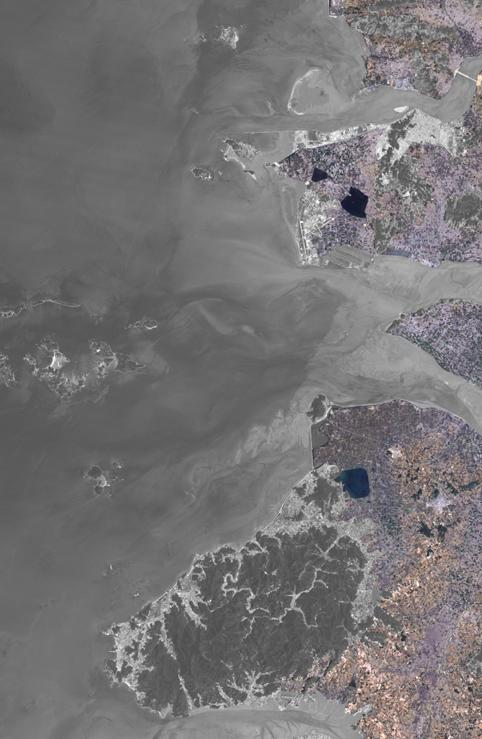
60 1986

61 2006
SUPPORTING DOCUMENT
I. TIMELINE
II. BIBLIOGRAPHY
SUPPORTING DOCUMENT TIMELINE
64
Research the historical and socio political reasons caused the rapid urban expansion and how it affected the status of farmers, agriculture, and the traditional farming culture in Hangzhou.


Research the cases relevant to urban-rural conflict and study their approaches or partial strategies that could be contributed to the situation in Hangzhou.
Start research document layout and address issues and advices mentioned by advisor and guests to incorporate more research information if it is necessary for the proposal presentation.
Refine thesis statement based on the added information from the research.
Present design proposal for the final semester.
Propose ideas, diagrams, and physical or digital models to support the understanding of the design proposal and exploring for further possibilities. Examine if the proposal solving the issue pointed out in the research document.
Determine the final approaches of the design proposal


Produce models, drawings, renders, and videos based on the advice and critiques from desk crits.
Finalize the design proposal and document.

65
Nov. Dec. Jan. Feb. Mar. Apr.
SUPPORTING DOCUMENT BIBLIOGRAPHY
66
Agricultural Village Department of Zhejiang Province, “Sown area and output of grain crops in the province in 2019 (2019年全省粮食作物播种面积与产量 ).” Hangzhou Agricultural Bureau, June 24, 2021. http://agri. hangzhou.gov.cn/art/2021/6/24/art_1229357832_3887867.html
Amati, Marco, and Makoto Yokohari. "The establishment of the London greenbelt: reaching consensus over purchasing land." Journal of Planning History 6, no. 4 (2007): 311-337. https://journals.sagepub.com/doi/abs/10 .1177/1538513207302695?casa_token=jSoasst3M3sAAAAA:Rt0ctJgS-m99obID9P2QT7rUQMXPXzpUP6VE KTCf6tyl74pU9Mgh0Mr9xD8kVV9_uPtC-el_Wqs
Beacham, Andrew M., Laura H. Vickers, and James M. Monaghan. "Vertical farming: a summary of approaches to growing skywards." The Journal of Horticultural Science and Biotechnology 94, no. 3 (2019): 277-283. https:// www.tandfonline.com/doi/full/10.1080/14620316.2019.1574214?casa_token=ikKosmqQubQAAAAA%3A3OMubnSa5RqC2M3f7ye91NIzizXnrG1SMLKSAJqK796p9p6l6_G2fcwkoUhZDuMLTE5UnD4C-c
Cho, Dong-Oh. "The evolution and resolution of conflicts on Saemangeum Reclamation Project." Ocean & Coastal Management 50, no. 11-12 (2007): 930-944. https://www.sciencedirect.com/science/article/abs/pii/ S0964569107000087
Colding, Johan. "‘Ecological land-use complementation’for building resilience in urban ecosystems." Landscape and urban planning 81, no. 1-2 (2007): 46-55. https://www.sciencedirect.com/science/article/abs/pii/ S0169204606002179
Grydehøj, Adam. "Making ground, losing space: land reclamation and urban public space in island cities." Urban Island Studies 1, no. 2015 (2015): 96-117. https://www.researchgate.net/profile/Adam-Grydehoj/ publication/286331629_Making_Ground_Losing_Space_Land_Reclamation_and_Urban_Public_Space_in_ Island_Cities/links/5667e5c108aea62726ee9f72/Making-Ground-Losing-Space-Land-Reclamation-and-UrbanPublic-Space-in-Island-Cities.pdf?_sg%5B0%5D=started_experiment_milestone&origin=journalDetail
He, Shan, Yue Su, Amir Reza Shahtahmassebi, Lingyan Huang, Mengmeng Zhou, Muye Gan, Jinsong Deng, Gen Zhao, and Ke Wang. "Assessing and mapping cultural ecosystem services supply, demand and flow of farmlands in the Hangzhou metropolitan area, China." Science of the Total Environment 692 (2019): 756-768. https://www.sciencedirect.com/science/article/abs/pii/S0048969719332747
He, Shan, Lin Lin, Qian Xu, Chenxia Hu, Mengmeng Zhou, Jinhua Liu, Yongjun Li, and Ke Wang. "Farmland Zoning Integrating Agricultural Multi-Functional Supply, Demand and Relationships: A Case Study of the Hangzhou Metropolitan Area, China." Land 10, no. 10 (2021): 1014. https://www.mdpi.com/2073445X/10/10/1014
Macdonald, Sara, and Roger Keil. "The Ontario greenbelt: shifting the scales of the sustainability fix?." The Professional Geographer 64, no. 1 (2012): 125-145. https://www.tandfonline.com/doi/full/10.1080/00330124.20 11.586874
Moreno-Peñaranda, Raquel. “Japan’s Urban Agriculture: Cultivating Sustainability and Well-being.” United Nations University, September 23, 2011. https://ourworld.unu.edu/en/japans-urban-agriculture-cultivatingsustainability-and-wellbeing
Pickett, Steward TA, Mary L. Cadenasso, and J. Morgan Grove. "Resilient cities: meaning, models, and metaphor for integrating the ecological, socio-economic, and planning realms." Landscape and urban planning 69, no. 4 (2004): 369-384. https://www.sciencedirect.com/science/article/abs/pii/S0169204603002524
Wang, Wei, Hui Liu, Yongqi Li, and Jilan Su. "Development and management of land reclamation in China." Ocean & Coastal Management 102 (2014): 415-425. https://www.sciencedirect.com/science/article/abs/pii/ S0964569114000696
Yuan, Tian, Xia Yiping, Zhou Lei, and Li Danqing. "Land use and cover change simulation and prediction in Hangzhou city based on CA-Markov model." Int. Proc. Chem. Biol. Environ. Eng 90 (2015): 108-113. http:// www.ipcbee.com/vol90/rp019_ICECB2015-L3017.pdf
"K-Farm / Avoid Obvious Architects '' ArchDaily, June 20, 2021. <https://www.archdaily.com/963591/k-farmavoid-obvious-architects> ISSN 0719-8884
67
























































